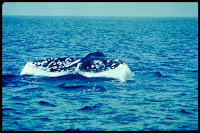When humans populated the Pacific Islands, they brought immense ecological change—perhaps approached only by the change caused by their traveling companions—rats.
(Image: A Pacific rat, Rattus exulans, in a New Zealand government photo.)
The body of scientific evidence has grown dramatically to indicate that the impact of the secretive rodents has been significantly underestimated. But that's changing.
Polynesians carried four animals with them to most of the island they occupied: dogs, pigs, chickens and rats. Not every island had all four, but most did. (Australian researcher Atholl Anderson discusses it here.)
“Ecological, paleoecological and archaeological studies have documented the direct and indirect impacts of rodents on native plants and animals, and implicated them in transforming many island environments,” wrote Donald Drake and Terry Hunt, both of the University of Hawai'i, in a 2008 article, “Invasive rodents on islands: integrating historical and contemporary ecology.”
The thing about rats, of course, is that they'll eat most anything. Among plants, they'll munch on seeds, seedlings and fruit. They'll eat ground and tree snails. And native birds and their eggs. And all kinds of other things.
They reproduce quickly and compete aggressively.
In a 2008 paper, Hawai'i researcher Steve Athens gave an overview in his article, “Rattus exulans and the catastrophic disappearance of Hawai'i's native lowland forest.”
The rats expanded far faster than humans did, and research now shows they were changing the character of the Islands well ahead of human movements in many areas.
“Rats radiated ahead of human colonizers on O'ahu, eating their way through the vegetation, perhaps before the colonizers had encountered much of the pristine lowand forest into which the rats had radiated,” Athens wrote.
In many areas, by the time humans began moving into new areas, the rats had already significantly altered the ecosystems—including the killing off of some species of native birds.
Scientists have come to this conclusion slowly and deliberately. A quarter of a century ago, the changed landscape was blamed largely on human-caused fire and agricultural clearing of the Polynesian era, and then the multiple land use impacts that followed European arrivals.
But increasingly, these conclusions didn't answer several questions. Notably, why were there such dramatic changes, even in places neither the early Hawaiians nor the later Europeans used much—like upland forested areas.
Research at 'Ewa on O'ahu showed that the native forest disappeared before humans showed in any numbers, and notably, before the charcoal evidence of widespread fire.
Two of the most common plants of early Hawai'i, based on pollen found in old sediment, were the loulu or Pritchardia palm, and the kanaloa, a legume of which now only one individual survives in the wild—on a sea stack off Kaho'olawe.
With the Kanaloa nearly extinct and the Pritchardia now rare, what happened?
And isn't it intriguing that two places with dense stands of Pritchardia—Nihoa Island west of Kaua'i and Huelo Island off Moloka'i—are both rat-free?
For Athens, the answer to the mystery is almost certainly rats—in this case the Polynesian or Pacific rat, Rattus exulans.
And of course, what rats did in Hawai'i, they've also done elsewhere. Hunt found that in archaeological digs on Rapa Nui or Easter Island, every seed of the extinct Rapa Nui palm is rat-eaten.
New Zealand researcher George Gibbs blames rats for “the end of an 80-million year experiment," in this paper.
He refers to the long isolation of New Zealand, and the development of its unique environment free of terrestrial mammals.
“The arrival of Polyesians in the 13th (century) heralded the end of this era, with the introduction of kiore (Rattus exulans, or Pacific rat), which had far-reaching effects on plant regeneration, survival of small ground vertebrates, larger invertebrates, and seabird breeding colonies,” Gibbs wrote.
“One could argue that rats are the original invasive species,” wrote Drake and Hunt.
© Jan TenBruggencate 2009
























